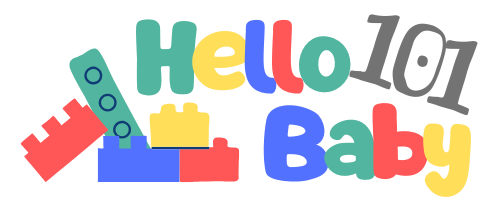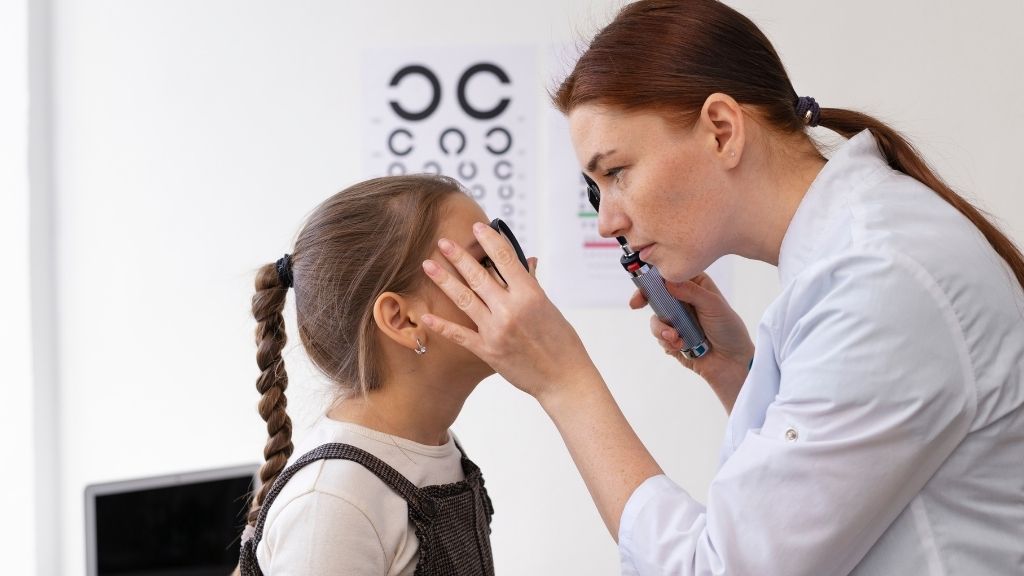As parents, we often focus on milestones like a child’s first steps or first words but eyesight is just as important for their development. Clear vision helps children learn, play, and build confidence in everyday life. Yet many parents in the UK are unsure when to book their child’s first eye test or how often it should happen.
This guide combines personal parenting experience with expert backed advice from trusted UK health sources like the NHS. You’ll discover when kids should have their first eye test, signs your child may need one earlier, and what to expect during the appointment.
By the end, you’ll feel reassured knowing how to protect your child’s vision with practical steps that are simple and stress free.
What Is a Children’s Eye Test?
A children’s eye test checks how well your child can see and whether they need glasses or other treatment. It is simple, painless, and carried out by an optometrist (eye specialist).
According to the NHS, eye tests for kids are free under the NHS and can detect common conditions like short sightedness, long sightedness, or squints early on.
Expert Tip: “The sooner vision problems are spotted, the easier they are to treat especially before age eight when the eyes are still developing.”
Why Do Children Need Eye Tests?
Good eyesight is essential for learning, reading, and playing safely. Many eye conditions do not show obvious symptoms, which is why routine checks are important.
This often matters because:
- Children may not realise their vision is blurry.
- Parents may not notice small signs of strain.
- Early treatment can prevent long term problems.
Many parents assume schools will spot vision problems, but that’s not always the case. Teachers may notice a child struggling to read the board or losing focus, but not all signs are obvious. In fact, some children are wrongly thought to have attention or behaviour issues when the real problem is poor eyesight. An early eye test rules this out and gives children the best chance to succeed both academically and socially
Parent Tip: “I thought my child was just clumsy, but after an eye test we discovered they needed glasses. The difference was amazing.”
Signs Your Child May Need an Eye Test
While routine tests are important, sometimes children show signs that they need an eye check sooner. Watch for:
- Squinting or closing one eye to see better
- Frequent rubbing of eyes
- Complaining of headaches or eye strain
- Difficulty reading or sitting too close to screens
- Poor hand eye coordination
- Avoiding activities that require focus
Imagine a child who avoids colouring, puzzles, or reading time. Parents may assume it’s just a personality trait or lack of interest. In reality, the child may simply find close up tasks uncomfortable because of undiagnosed vision issues. Once corrected with glasses, many children show sudden improvements in confidence, behaviour, and school enjoyment. This shows how vital it is not to dismiss small signs. If you are ever unsure, booking a quick eye test gives peace of mind.
When Should Kids Have Their First Eye Test?
Eye development begins at birth, and different checks happen as children grow.
Chart: Recommended Eye Test Timeline
| Age Stage | Recommended Check | Why It Matters |
| Newborn | Basic check at hospital | Detects serious early conditions |
| 6–8 weeks | GP or health visitor check | Confirms normal eye development |
| Around age 1–2 | Observation during routine visits | Identifies early vision issues |
| Age 4–5 | First full children’s eye test with optometrist | Prepares for school learning |
| Every 2 years | Routine NHS eye test | Ensures healthy ongoing vision |
Pro Tip: Even if your child seems fine, book their first children’s eye test before they start school. Early vision support helps with reading and classroom learning.
What Parents Can Expect at a Kids Eye Test
At home preparation
- Talk positively about the appointment to reduce worry.
- Play “eye test” games at home with letters or shapes.
You can role play the appointment at home by using a torchlight or showing picture cards. Some optometrists even allow you to bring a favourite toy, which can be ‘tested’ first to make the child laugh. Dressing the test up as a game makes a big difference.
During the test
- The optometrist will use pictures, shapes, or letters instead of just letters on a chart.
- They may use lights or special lenses to check eye health.
- The test is quick and child friendly.
Parents are usually allowed to sit beside their child during the check. If your child is nervous, holding their hand or letting them sit on your lap can make them feel safe. Optometrists are trained to work with children of all ages, including toddlers, so even shy children tend to relax quickly
After the test
- You’ll get results immediately.
- If needed, NHS covers the cost of glasses for children.
Parent Tip: “For us, explaining the eye test as a fun game helped my toddler relax and they actually enjoyed it.”
Do’s and Don’ts for Eye Care in Kids
- Do book an NHS children’s eye test at least every 2 years.
- Do encourage outdoor play, which may help reduce risk of short sightedness.
- Do limit long stretches of screen time.
- Don’t assume your child will tell you if they cannot see clearly.
- Don’t delay an appointment if you notice squinting or headaches.
Emotional Support for Parents
If you feel guilty for not spotting your child’s vision problems earlier, you’re not alone. Many parents only find out at a routine check. What matters is that you act now because with early support, most children adjust quickly and thrive.
Parent Tip: “Glasses felt like a big step, but my child wore them proudly once we chose a fun pair together.”
Common Eye Conditions in Children
Eye tests don’t just measure how clearly your child can see they also help detect common childhood eye conditions:
- Amblyopia (lazy eye): When one eye is weaker, often treatable if caught early.
- Strabismus (squint): When the eyes don’t point in the same direction, which may require glasses or therapy.
- Short sightedness (myopia): Difficulty seeing far away, increasingly common with high screen use.
- Long sightedness (hyperopia): Trouble focusing on close up tasks, such as reading.
Detecting these conditions before age 8 gives the best chance for successful treatment.
FAQs
At what age should children first have an eye test?
Most experts recommend by age 4–5, before starting school, unless problems are spotted earlier.
Are children’s eye tests free in the UK?
Yes, the NHS provides free eye tests and glasses vouchers for children under 16.
How often should kids have an eye test?
Every 2 years, or sooner if advised by your optometrist.
Can poor eyesight affect school performance?
Yes, vision problems can impact reading, concentration, and confidence in class.
Conclusion
Clear vision is vital for your child’s learning and development. Most parents find that kids eye tests are simple, quick, and reassuring. The NHS makes it easy and free, so you never need to delay.
Regular eye checks also build a healthy habit for life. When children grow up seeing eye care as normal, they’re more likely to continue routine checks as adults. This not only protects their own vision but also sets a positive example for siblings and future generations
Personal note: As a parent, I know how easy it is to miss the signs, but once you book that first appointment, you will feel reassured knowing you’ve taken a big step for your child’s wellbeing.



